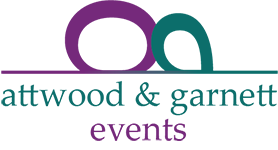By Dr Michelle Garnett & Prof Tony Attwood
Introduction
Ever since the publication of the Diagnostic and Statistical Manual for Mental Disorders Fifth Edition (DSM-5; APA, 2013), you will have heard people suddenly talking about the levels of autism. Suddenly a person was not Asperger’s, autistic, or PDD-NOS, but they had Autism Spectrum Disorder (ASD) Level 1, 2 or 3. What does this terminology mean, and why did it change?
The committee of the DSM-5 collated all the research to date on autism, consulted with experts in autism the World over and concluded that autism exists on a “spectrum” rather than in discrete categories. To try to capture this spectrum, they delineated levels of autism, rather than categories of autism, as had been in the previous edition of their text. The problem with only considering levels of autism is that levels are linear, implying mild, moderate, and severe autism, whereas a spectrum is multidimensional. There has also been an interpretation that some forms of autism are “mild” and therefore “less challenging,” which is problematic because it minimises the distress experienced when an individual has a lower level of autism than Level 3.
To get around this problem the DSM-5 committee were very clear that the level designated indicated level of support needs as well as severity of autism, and that other specifiers were needed to fully understand the person’s presentation of autism, and thus to design a plan for therapy and support that is tailor-made for that person. For example, the diagnosis must specify whether the ASD occurs with or without intellectual or language impairment, with or without another medical or genetic condition, and with or without another neurodevelopmental, mental, or behavioural disorder, and with or without catatonia.
In other words, autism was recognised to rarely occur in its “pure” form, and that having Specifiers, such as what other conditions are also present, and what the support needs are would be fundamental to understanding the complexity of the presentation, as a multidimensional or spectrum disorder, rather than being simplified down to a number from “1’ to “3,” which can be misinterpreted.
What are the Levels and What is Autism Plus?
The levels of autism start at Level 1 which is described by the DSM-5 as “Requiring support,” move through Level 2 “Requiring substantial support,” and end with Level 3, “Requiring very substantial support.” The diagnostician is required to specify the Level of support required for each of two major components of autism, social communication, and restricted, repetitive behaviours (RRBs). For example, Level 1 support needs may include noticeable difficulties initiating social interactions, unsuccessful responses to others, and unsuccessful attempts to make friends, whereas Level 3 social communication difficulties are those that cause severe impairments in functioning because of limited speech, rare initiations, approaching only to get one’s own needs met.
Level 1 RRBs are described as inflexible behaviours that cause significant dysfunction across one or more contexts, and organisational and planning issues impede independence. For this category Level 3 RRBs by contrast impede the person across all contexts, and great distress is the result with even minor changes of focus or action.
The Levels describe how autism is impacted, but part of the impacts can be due to having Autism Plus. Autism Plus means meeting the diagnostic criteria for autism, but also meeting criteria for another condition, such as another neurodevelopmental condition for example intellectual or learning impairment or attention deficit/hyperactivity disorder (ADHD), a mental health disorder such as depression, OCD, PTSD or agoraphobia, or a behavioural disorder such as oppositional disorder or conduct disorder. If a person has autism plus another condition, the result is usually, but not always, increased autistic signs and symptoms, and increased impairment across more contexts, such as home, school, work, and leisure.
In the Text Revision of the DSM-TR, which will be released imminently, there will be no change to the descriptions of the Levels of autism, but there will be a change to the definition of the specifiers of having other conditions, or Autism Plus. Instead of being able to only specify another diagnosable condition, as described above, clinicians may describe another neurodevelopmental, mental, or behavioural problem, even if it is not a diagnosable condition.
Having Autism plus other problems, including other conditions, usually means that the Level of autism is greater.
Why are knowing the levels of autism important?
Knowing the level of autism is important because the Level denotes the level of support needed. Interestingly, here the DSM-5 specifically states that “The descriptive severity categories should not be used to determine eligibility for and provision of services; these can only be developed at an individual level and through discussion of personal priorities and targets.” P.51, APA, 2013). Here we are being urged to look further than the label to design what supports, and therapies are needed, but also to look at important other parameters, including other conditions, the person’s own goals and priorities, and importantly the person’s strengths.
Knowing the level of autism is an important component, but so is the individual’s profile in the broadest sense.
Some Examples…
Historically we may think of a person with ASD Level 3 across both Social Communication and RRBs as having very limited expressive language, mild intellectual impairment and largely being in a world of their own. This level of autism is what used to be called classic autism. Now their diagnosis would be ASD Level 3, with severe language impairment, and mild intellectual impairment. The prognosis for a person with this diagnosis would be fairly limited in that they would likely not work, or work in a sheltered workshop, and would need support living accommodation.
ASD Level 3 across both Social Communication and RRBs without language or intellectual impairment, with PTSD, ADHD and severe depression will also have substantial support needs and a limited prognosis. This person may speak in full sentences and even have a university degree but may be so hampered by their autism, due to their additional diagnoses, that they are unable to perform even the simplest self-care tasks and are unable to gain and maintain employment.
Tips and Reminders for Levels of Autism
- Be wary of making assumptions about the person’s functional capacity or level of challenge and distress based on the level of autism alone.
- Support needs are based on an assessment of the level of autism and autism plus, i.e. what other conditions co-exist with autism.
- Support needs are also based on knowing the whole person, their strengths, priorities, goals, and aspirations.
Summary and Where to From Here
Autism is a spectrum disorder that is rarely diagnosed alone because many other conditions co-occur with autism. Just knowing the level of autism will tell you about the level of support needed, but not the level of distress, or the type of support required. To understand how to support an autistic person we need the diagnosis, with the specifiers, including level and co-occurring conditions, as well as that person’s strengths, goals, and priorities.
Our trainings in autism cover all levels. If you support a child or adolescent with nonverbal ASD Level 2 or 3, we can highly recommend our online course, Understanding and Supporting Nonverbal Autism.
If you support a verbal child or adolescent with ASD Level 2 or 3 due to ADHD or emotional issues, we can recommend attending Emotion Management for Autistic Children and Adolescents
If you are a teacher supporting a student with ASD Level 1-3 we recommend Autism in School
If you are an autistic woman, ASD Levels 1-3 we can recommend Diagnosis for Autistic Girls and Women
If you are a health professional seeking more training in assessment and therapy for autistic adults, we can recommend our Masterclass, Diagnosis for Autistic Adults
References
American Psychiatric Association. (2013). Diagnostic and Statistical Manual of Mental Disorders. Fifth Edition. Washington, DC




